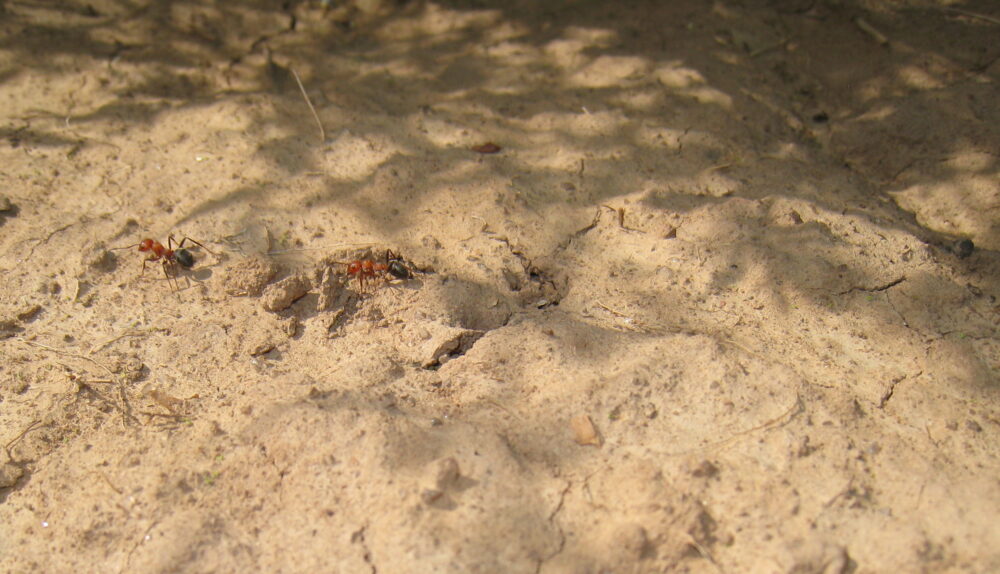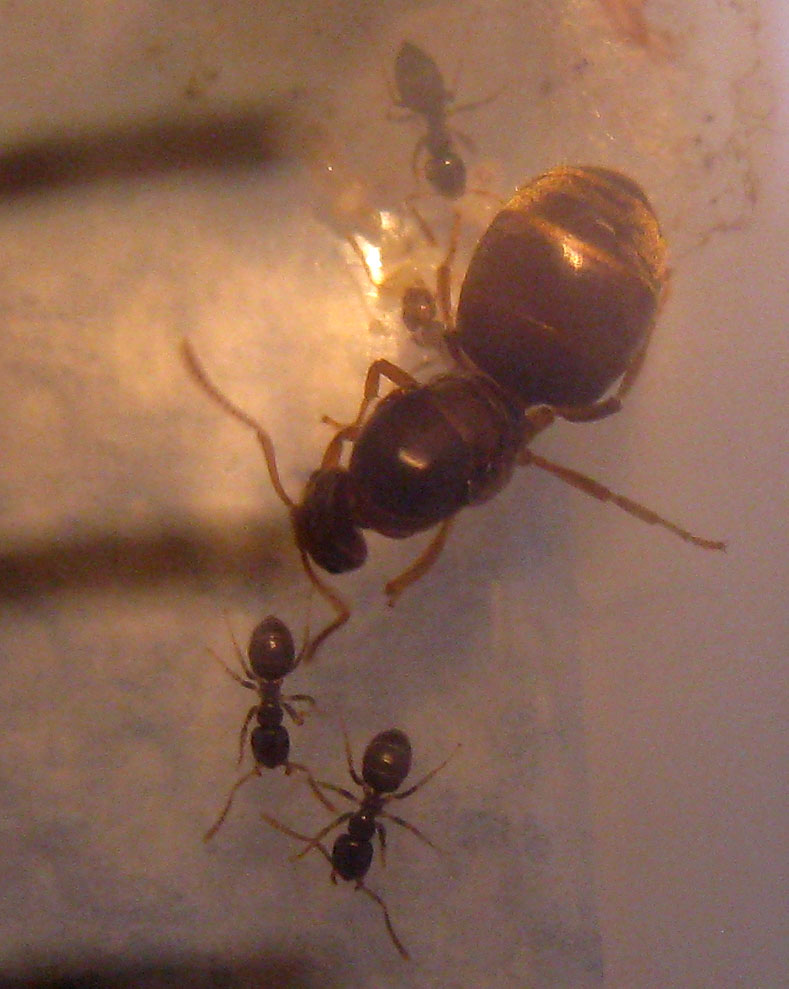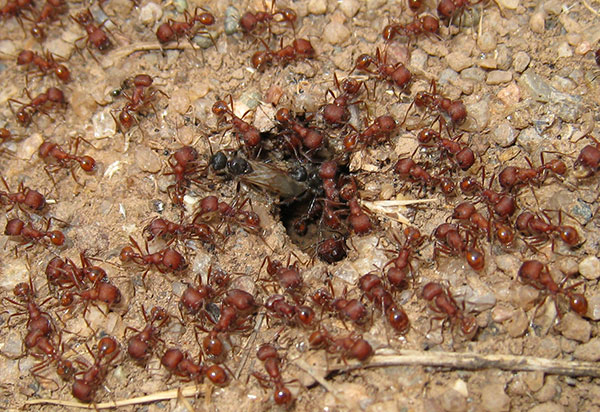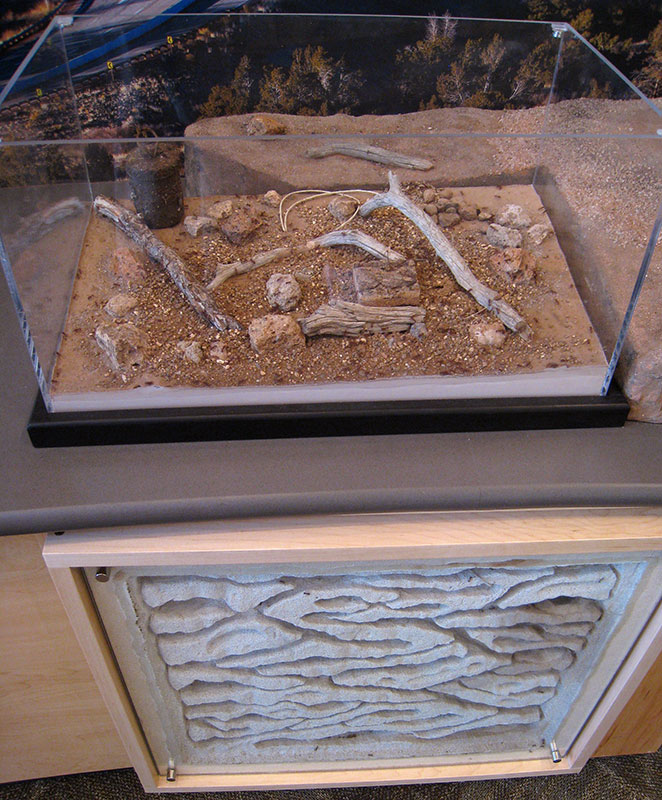
By Jennifer Macke
Ants are fascinating! If we put aside for a moment our thoughts about ants in the kitchen, or ants in our pants, we can look at them as an indispensable part of every ecosystem, and as animals with an amazing social structure.
Ants are sometimes described as “ecosystem engineers”. Their roles in the environment include cleaning up microscopic food scraps, aerating the soil, putting fertilizer into the ground, and dispersing plant seeds. They often eat spiders, ticks, termites, and other insects, helping to control populations of pests.
No Social Distancing for Ants
Ants are considered “eusocial” animals, meaning that they have an advanced level of social organization. In eusocial species, a single female (or a few females) produces offspring, and non-reproductive individuals cooperate in caring for the young.
An ant colony may contain anywhere from a dozen individual ants, to many thousands. All live in a single home, usually underground. Living in such close quarters, they certainly cannot ever practice social distancing!
Communication is essential to social animals. Ants often communicate with each other by touch. This often consists of touching each other’s antennae. A particular type of touch or stroke serves to communicate information between two ants. Ants stay clean by grooming each other.
Ants also communicate by pheromones, which are chemical signals that they emit. When ants find a food source, they lay down a trail of pheromones to lead the other ants to the food. Each ant colony has its own unique set of scents, which serve as a way of recognizing members of one’s own family.
Amazingly, ants also communicate by sound. Their sounds are too quiet for us to hear, but they are a very important method of communicating, just as speaking is to us. They produce the sounds by rubbing their legs against their body or other legs, producing washboard-like sounds.
Social Castes

An ant colony contains ants of several types of ants, called castes, that differ in size, shape, and behavior. The most obvious (and largest) is the queen. An ant colony usually has a single queen, but some species can have multiple queens in one colony. Queen ants are quite remarkable. They usually mate only once in their life, but produce fertile eggs for their entire lifespan. A queen ant typically lives 5 to 10 years, but some live up to 20 years. As the name implies, the queen is the undisputed leader of the team.
Drones are male ants whose only purpose is to mate with a new queen. Drones are short-lived, and only exist during the brief time of the year when the colony produces winged reproductive ants.
Worker ants are female, but they do not reproduce. The workers carry out all the work of the colony, including gathering food, building the nest, tending the offspring, and defending their territory. In some species, there are several different sizes of specialized worker ants. In other species, the workers are identical, but the same worker will assume different jobs over the course of her life, usually becoming a “soldier” that defends the colony toward the end of her lifespan.
Ant Life Cycle

Ants have an interesting life cycle, based on their social organization. At a specific time of year, the colony produces male and female winged reproductive ants, called “alates.” Depending on the species, these winged ants appear sometime in spring or summer. All colonies of a particular species release their winged ants at the same time, often triggered by recent rain and other favorable weather conditions. In addition, each species has its own “internal clock” to know when it’s the right time of year to release winged ants in synchrony with other colonies of their species.
The winged ants fly and mate in mid-air. After mating, the females return to the ground, shed their wings, and walk around until they find a good place to build a new colony. When they find a good place, they usually dig themselves an underground cavity to live in. There, they lay their first eggs, and a new colony is born.
The first worker ants produced by a new queen ant are called “nanitics.” They are ordinary workers, but miniature in size. Once a new queen has hatched her first nanitics, she never has to work again. From that point on, the workers take care of her, gathering her food and raising future generations of workers.
Many Ants, or One Superorganism?

As humans, we see ourselves as individuals, so it is sometimes difficult for us to grasp what life is like for colonial insects. Some people refer to a colony of insects as a “superorganism” — a single collective organism, with individuals performing the functions that we associate with the body parts of larger animals.
We can think of each individual ant as we think of the cells or body parts in our bodies, each one being a tiny piece of the whole. When we see a line of ants marching to a food source, we can think of this as being like our arm, as we reach out toward our food. The ants that defend the nest are analogous to our skin and immune system, which shield us from the outside world. And the queen ant is clearly the brains of the operation!
Ant Watching
Ants are fascinating to watch. When you go outside this season, see if you can observe two ants meeting and greeting each other. Do they touch their antennae together? Do they behave differently when they are near their colony or farther away? What happens when two ants of different species encounter each other?
Please feel free to report the results of your observations in the comment section below, or join the PEEC Naturalists email interest group. Some of our local species are shown in detail in our Insect Guide.
